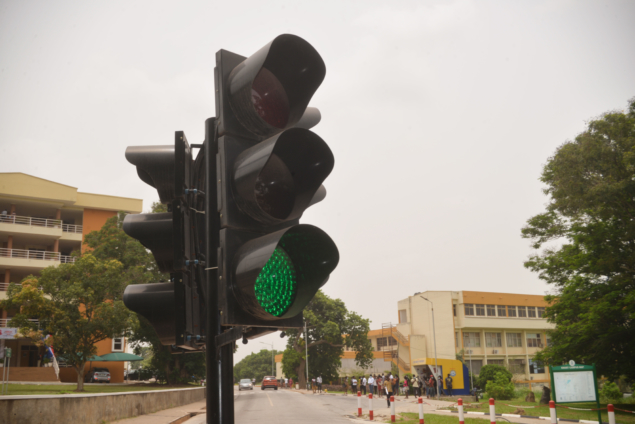In 2019, the Roads and Highways Minister, Kwesi Amoako Atta announced a remote-controlled traffic system.
He raised the hopes of Ghanaians that the introduction of the remote-control system will be possible because the erratic power supply in the country has come to an end.
With the country still battling the old foe, it seems the $3.5 million project would have to take a bench.
But while Ghana’s highways are in a confusion during blackouts, the campus of Kwame Nkrumah University of Science and Technology is enjoying smooth vehicular flow. What is the secret?
A hawker, Kukua gained nationwide attention after a viral footage of her directing traffic came to light.
The 24-year-old had observed a number of accidents whenever the traffic lights went off. Her warden flair manifested, when she would leave her wares to control the confusion-prone motorists.
It might have been a different situation around Anloga junction, where the Oforikrom Police will quickly attend to such situations.
Other busier junctions like Abrepo junction and Ashtown have not had such luxury especially at night, when the traffic lights chaperone the dumsor.
Let there be light
Starting from the KNUST main entrance, solar street lights bedeck the streets leading to the commercial area, KNUST basic schools and Conti Roundabout.
At the Agric junction, the first set of solar traffic lights are sighted. This controls the cars going to Ayeduase gate and the main campus.
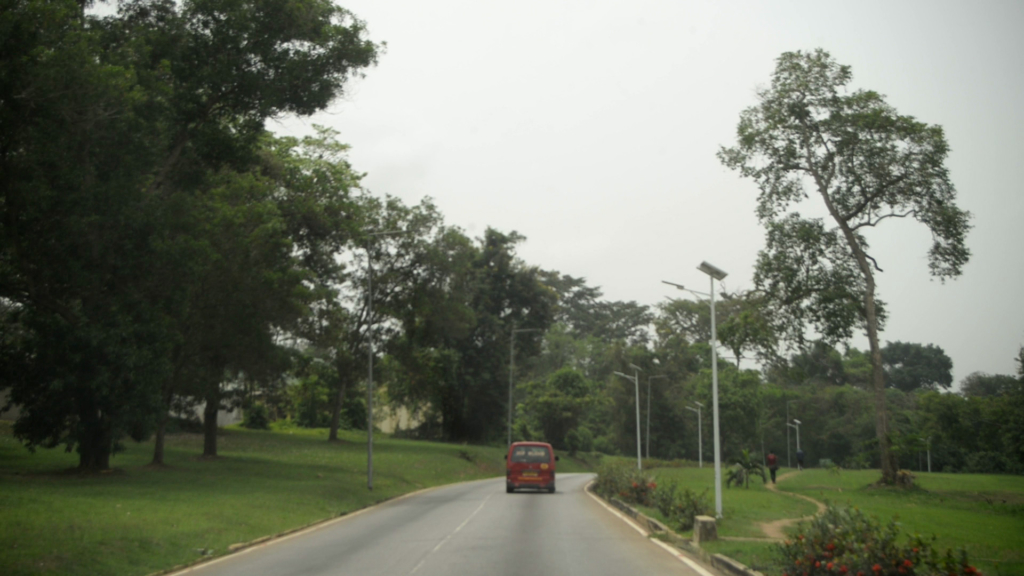
At the centre of the main campus, the traffic lights control vehicles moving to the various colleges.
The traffic on campus was initially manned by campus security.
A project led by Prof. Reuben Tamakloe at the Physics Department in 2014 sought to eliminate the situation.
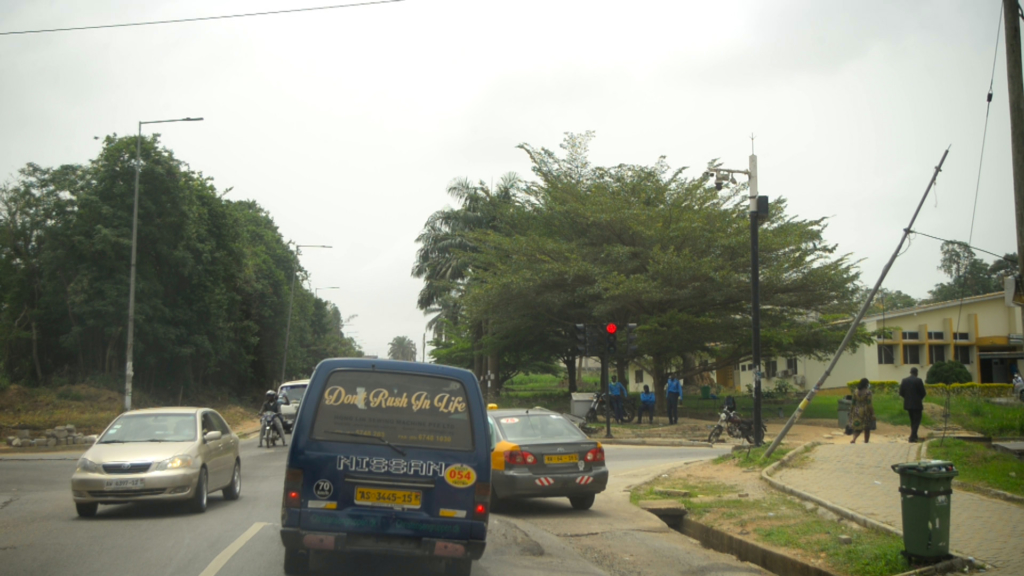
“The project was about improving traffic on campus and stopping security men from directing the traffic,” said Bruce Konu Christopher, a postgraduate student at the Physics Department who has been part of the project.
The traffic lights can run for a week without sunlight when it is fully charged.
“The solar panels are 24-volt rated and it is powered by 12 volts batteries which are in series. So, it can take seven days before the system can go down in the absence of Sunlight,” said Victor Adu Twum, an Mphil Physics student and member of the project.
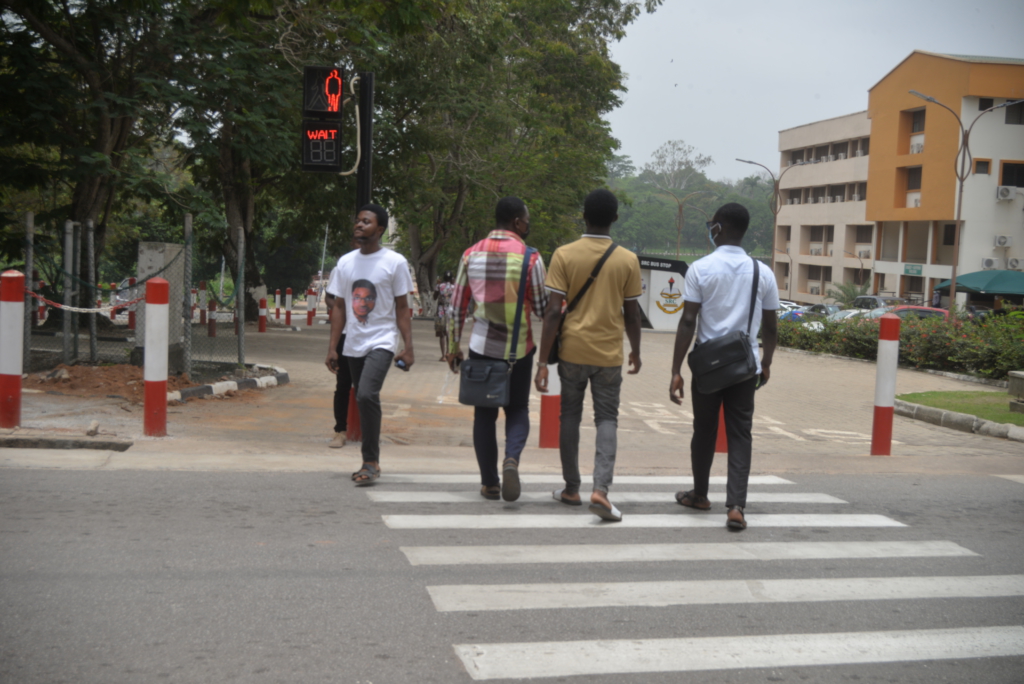
Constant supply of Technicians
The main technicians on the projects have been undergraduates and postgraduate students as well as lecturers.
Some are involved in programming, soldering and hardware.
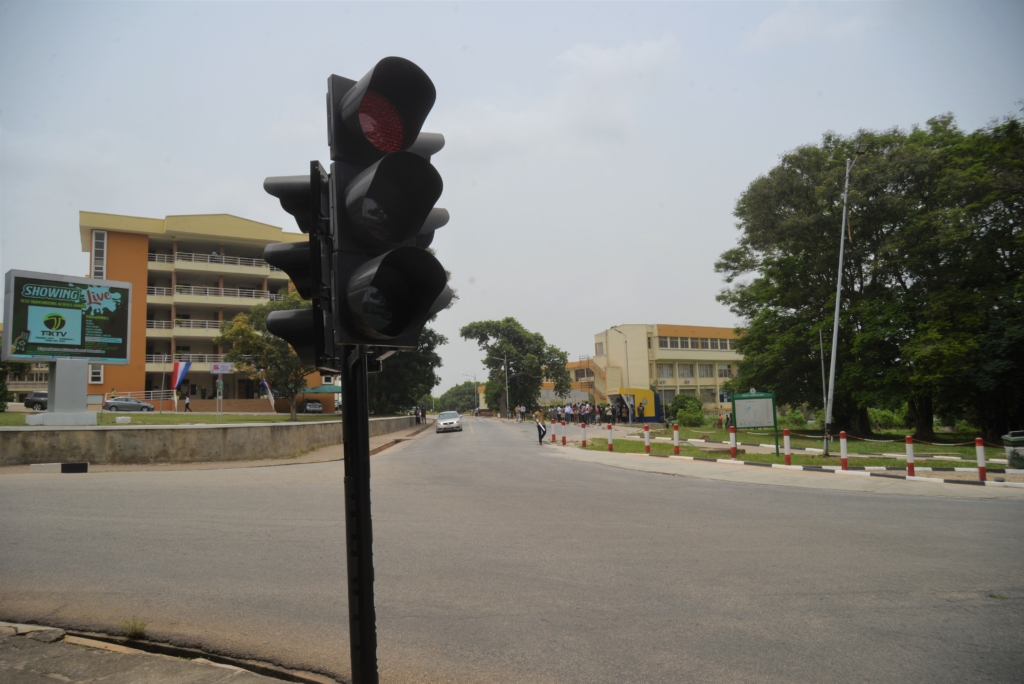
Through this project, Christopher was able to develop a single-face traffic light.
“All over the years, it has been undergraduate, masters and lecturers and has improved student technicalities and sometimes some small stipend for their hard work,” said Christopher.
Scaling up project nationwide
A number of traffic lights in the Kumasi metropolis have been non-functional for some time now. City authorities have issued many promises to repair them.
According to Victor Adutwum, the KNUST spent ¢85,000 to mount the traffic lights.
Perhaps, the Roads and Highways Ministry can channel the money for the remote-controlled system into the solar traffic lights.
With the availability of student technicians, Ghana would not have to struggle in getting technicians to repair faulty traffic lights.
The Roads and Highways Ministry can realize its remote-controlled-traffic vision, if the KNUST approach is fully adopted.
Latest Stories
-
Is DSTV worth What Ghanaians Pay?
29 minutes -
Chiefs back Anti-Illegal Mining personnel’s raid on galamsey sites in Prestea Huni Valley
1 hour -
Fair Wages and Salaries Commission inaugurates 7-member board to ensure equity in public sector compensation
2 hours -
Reviving Growth: A bold step by the Bank of Ghana and the Mahama administration
2 hours -
Vice President of Ghana meets management of Afriwave Telecom
2 hours -
Honouring a Legend: Why Ghana must honour Daddy Lumba with a Posthumous PhD
2 hours -
EOCO seizes Lamborghini from Shatta Wale in FBI-backed asset recovery operation
3 hours -
NCD Alliance hails MahamaCares; urges safeguards against ‘unhealthy’ industries
3 hours -
PURC Volta/Oti office resolves over 99% of utility complaints in 2025 mid-year report
3 hours -
MTN Ghana supports Ada Asafotufiami Festival with GH₵32,000
3 hours -
Ghanaian culture takes centre stage in France at GoldCoastEvent Festival 2025
3 hours -
Mrs Sophia Wood
3 hours -
The era of high interest rates cannot be sustained – BoG Governor warns banks
4 hours -
BoG Governor urges banks to rethink lending strategy after policy rate cut
4 hours -
Finance Minister decries mismanagement at PBC, charges new board to restore integrity and viability
4 hours

